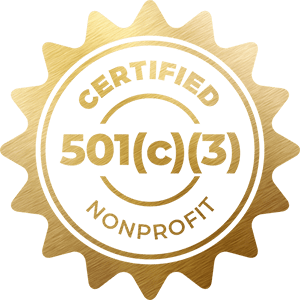How a Nonprofit Agency Can Assist You Optimize Your Company's Reach
How a Nonprofit Agency Can Assist You Optimize Your Company's Reach
Blog Article
Assessing the Challenges and Opportunities Faced by a Nonprofit Company in Getting Its Mission and Goals in Today's Culture
In the existing landscape, nonprofit firms are navigating an intricate range of obstacles, such as fluctuating financing sources and enhanced competitors for benefactor engagement. These difficulties, while intimidating, can likewise open methods for innovation and collaboration that may improve their capability to meet goals. By examining how nonprofits can strategically adjust to these characteristics, we can uncover not only the methods they employ to conquer obstacles but likewise the untapped possibility that exists within their operational structures. What remains to be seen is how these companies will harness these possibilities to redefine their influence in society.
Current Landscape for Nonprofits
The existing landscape for nonprofits is defined by a complex interaction of advancing funding models, enhanced competitors for donor focus, and enhancing needs for responsibility and transparency. Not-for-profit organizations are progressively diversifying their earnings streams to include gives, private contributions, business sponsorships, and social venture efforts. This change reflects a strategic feedback to conventional financing sources ending up being more uncertain and competitive.
Moreover, the increase of electronic communication systems has transformed just how nonprofits engage with potential contributors. Social network, crowdfunding, and online projects are now essential tools for getting to more comprehensive target markets, yet they also escalate competition among organizations trying limited resources. In this atmosphere, nonprofits need to improve their messaging to effectively capture the passion and dedication of supporters.
In addition, stakeholders are requiring greater transparency pertaining to how funds are assigned and the measurable effect of nonprofit tasks. This pattern necessitates that organizations embrace robust responsibility measures, including detailed reporting and assessment frameworks, to show their performance. Subsequently, the not-for-profit market is browsing a landscape that needs cutting-edge reasoning, calculated versatility, and a commitment to honest methods in order to prosper in the middle of these dynamic difficulties and chances.
Key Difficulties Run Into
Navigating the not-for-profit market presents a myriad of challenges that can impede business effectiveness and sustainability. Among one of the most pressing issues is the dependence on irregular funding resources. Nonprofits frequently depend upon grants, contributions, and federal government assistance, which can rise and fall dramatically, bring about monetary instability and troubles in lasting planning.

Staff retention and volunteer interaction present additional difficulties, as numerous nonprofits struggle to offer affordable wages and advantages. The high turn over rates can interrupt business continuity and affect service distribution.
Moreover, adjusting to technical developments and digital improvement stays a hurdle for lots of nonprofits. A lack of resources and competence can stop organizations from leveraging modern technology properly, consequently restricting their outreach and efficiency.
Inevitably, these difficulties require nonprofits to use tactical preparation and innovative strategies to keep their objective and guarantee sustainability in an intricate landscape. nonprofit agency.
Arising Opportunities
How can nonprofits harness emerging possibilities to enhance their influence? In today's rapidly advancing landscape, nonprofits have the opportunity to take advantage of technological improvements, shifting social characteristics, and increased public understanding to further their objectives. The surge of digital systems allows organizations to increase their reach, engaging with varied target markets and promoting area connections. By using social media and online fundraising devices, nonprofits can raise visibility and draw in more youthful donors who are a lot more likely to support causes they reverberate with.
In addition, collaboration with companies and other markets is coming to be extra prevalent, presenting nonprofits with access to resources, expertise, and innovative services. Partnerships can magnify efforts, drive neighborhood interaction, and produce sustainable influences. In addition, the growing focus on corporate social duty offers nonprofits chances to align with companies that focus on social influence, gaining financial support and shared objectives.
The raising focus on data-driven decision-making enables nonprofits to better analyze their programs and outcomes, boosting liability and efficiency. By embracing these emerging opportunities, nonprofits can not just strengthen their operational capabilities yet likewise expand their impact in resolving pressing societal issues, ultimately driving purposeful modification in their communities.
Techniques for Adjustment
Adapting to a frequently altering setting is necessary for nonprofits intending to sustain their impact and effectiveness. To navigate the complexities of modern-day culture, nonprofits must execute strategic techniques that boost their resilience and responsiveness.
One key method includes leveraging modern technology to broaden and improve operations outreach. By using digital platforms, nonprofits can improve interaction with stakeholders, enhance fundraising initiatives, and boost understanding of their objective. Furthermore, embracing data-driven decision-making practices allows organizations to assess their programs' effectiveness and adjust strategies based upon empirical proof.
Cooperation with various other organizations-- both for-profit and nonprofit-- can foster resource sharing and innovation. nonprofit agency. Collaborations can bring about common knowledge, funding opportunities, and increased networks, see this website inevitably magnifying the collective impact
Furthermore, growing a society of versatility within the organization is crucial. Educating personnel to embrace adjustment and motivating innovative problem-solving can encourage groups to respond effectively to arising difficulties.
Study and Success Stories
Successful adaptation approaches in the nonprofit sector can typically be shown via compelling study and success stories. One notable instance is the "Feeding America" network, which transformed its procedures during the COVID-19 pandemic. By leveraging innovation and area collaborations, the company scaled its food circulation initiatives to satisfy the unmatched demand, serving numerous households who faced food insecurity.
One more impactful case is the "Boys & Girls Clubs of America," which adjusted its programs to a virtual layout during lockdowns. By presenting on the internet mentorship and engaging activities, they kept connections with youth throughout the nation, making sure ongoing support and advancement regardless of the challenges postured by social distancing.
In a similar way, the "Globe Wildlife Fund" has efficiently incorporated community-based conservation techniques, encouraging neighborhood populations to take part in wild animals protection efforts. This technique not just cultivates community ownership but likewise improves eco-friendly sustainability.
These instance studies highlight how nonprofits are not only attending to instant obstacles yet are additionally developing lasting remedies that straighten with their goals. By sharing such success tales, companies can motivate others to introduce and adjust, inevitably driving favorable modification within their neighborhoods.

Final Thought
In conclusion, nonprofit companies today navigate an intricate landscape defined by economic instability, competitors, and labor force obstacles. Inevitably, resolving both challenges and her response opportunities will certainly be essential for nonprofits to satisfy their objectives and accomplish enduring effect in society.
In the current landscape, nonprofit firms are browsing an intricate selection of challenges, such as varying funding sources and raised competitors for contributor interaction. The nonprofit field is navigating a landscape that requires cutting-edge reasoning, tactical adaptability, and a dedication to honest methods in order to flourish amidst these vibrant challenges and opportunities.
Browsing the not-for-profit industry offers a myriad of difficulties that can hinder business effectiveness and websites sustainability.In conclusion, nonprofit agencies today browse a complicated landscape defined by financial instability, competitors, and workforce obstacles. Eventually, addressing both obstacles and opportunities will certainly be important for nonprofits to fulfill their goals and achieve long-term impact in culture.
Report this page